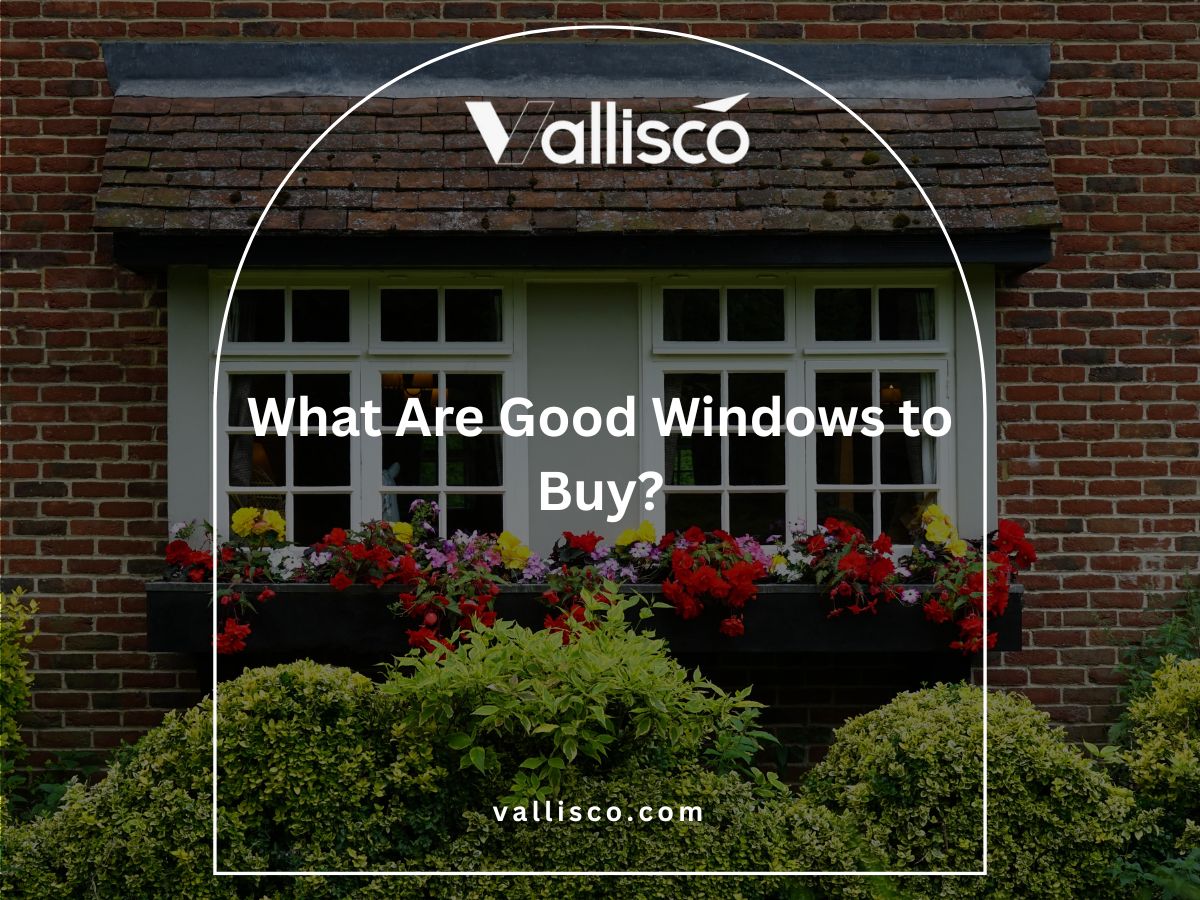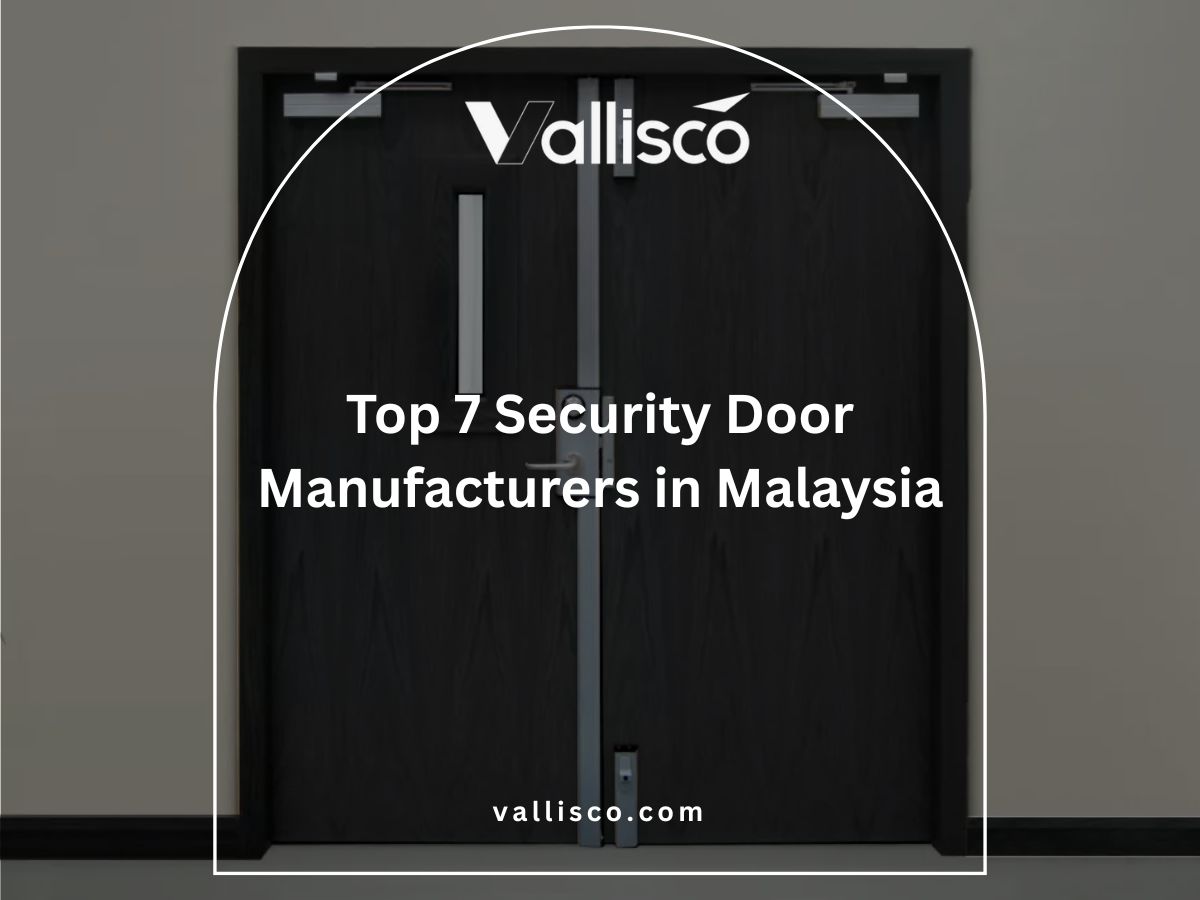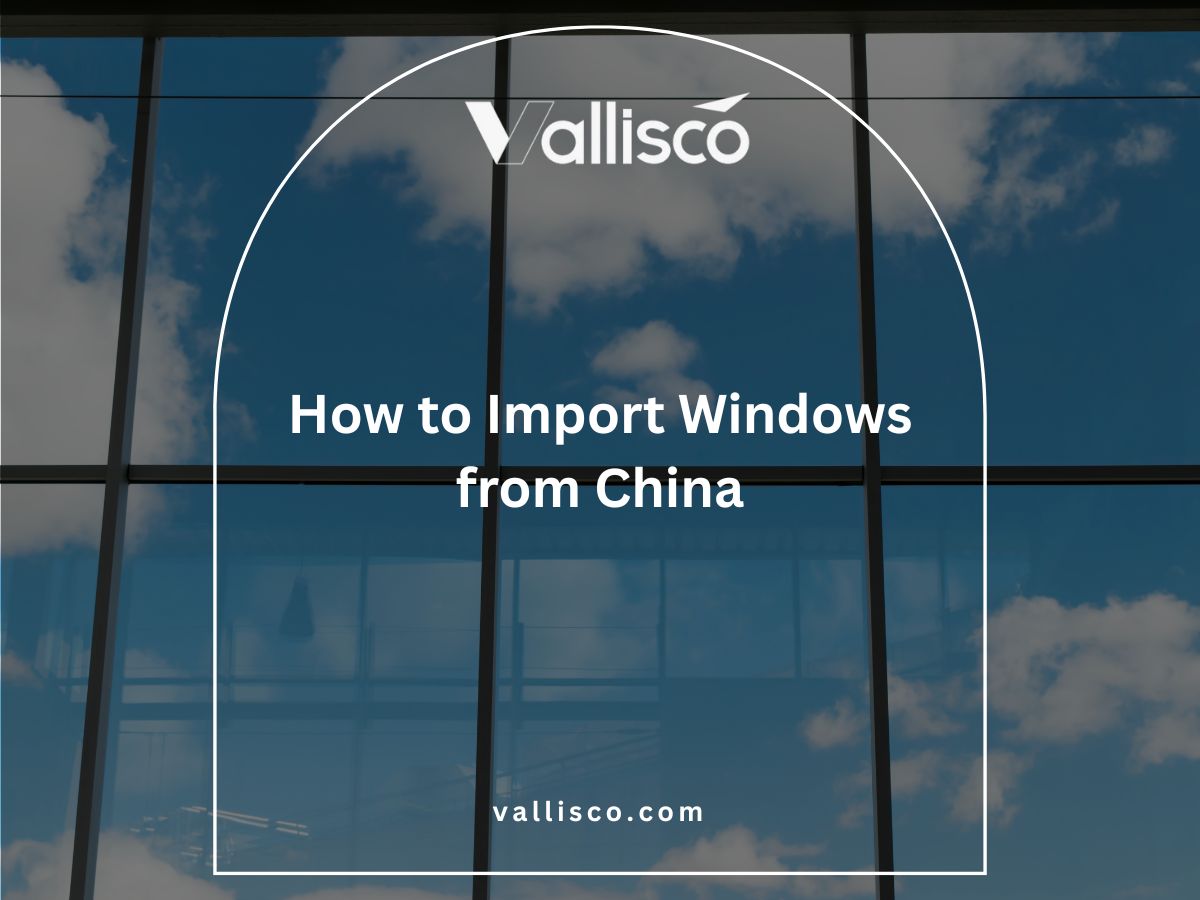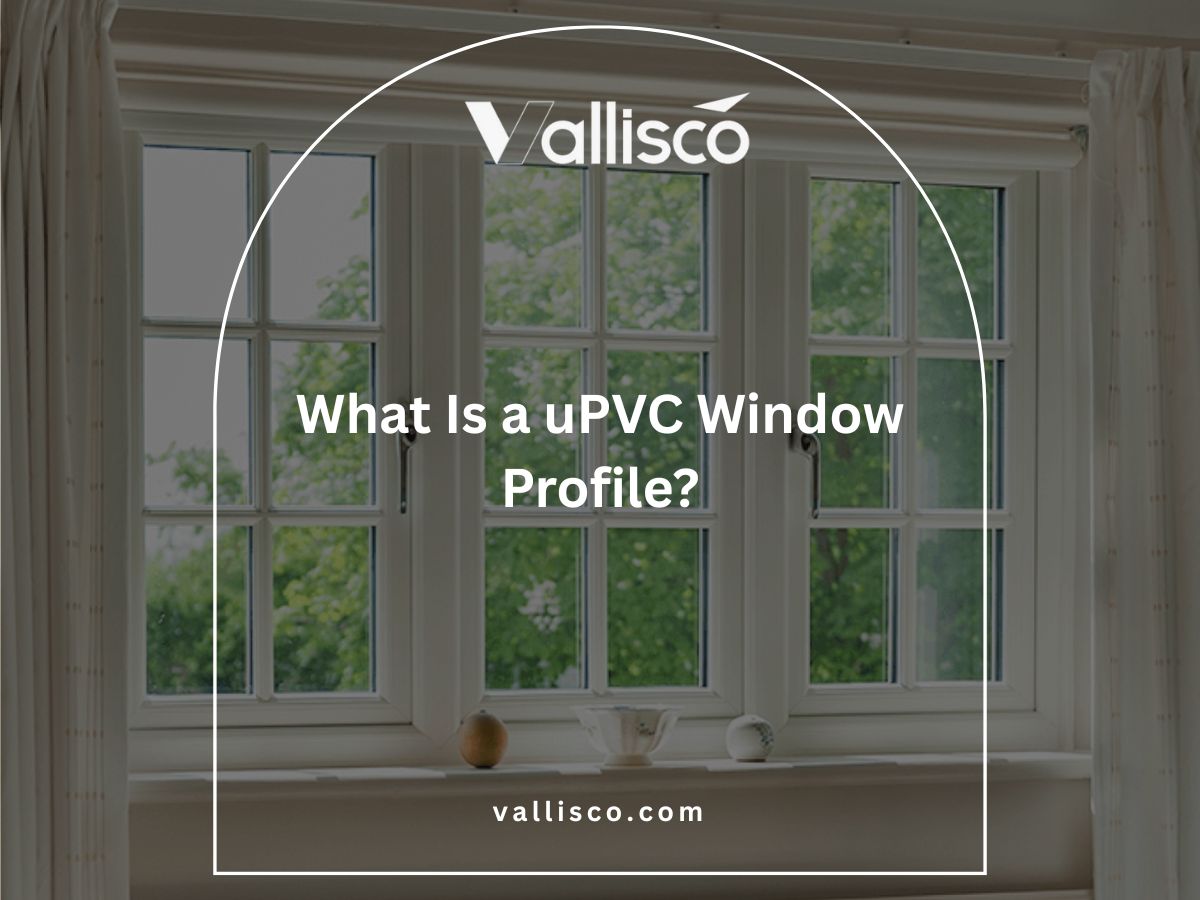I still remember the villa project where impact windows were installed instead of hurricane windows. The mistake failed a safety inspection and delayed the client’s move-in date.
If you’ve ever managed a build or renovation in a storm-prone area, you know the stakes are high.
Over the years, I’ve helped engineering teams and owners pick storm protection that passes inspections and lasts. My insight comes from working with multiple suppliers and seeing results on-site.
This review will break down the main differences between hurricane and impact windows, including how they’re built and when to use each. You’ll leave with a clear direction for your next project.
One wrong call here can cost more than the windows themselves.
So, let’s get started!
Comparison Chart
Need a fast look before diving deep? This table gives a snapshot of how hurricane and impact windows compare.
| Feature | Hurricane Windows | Impact Windows |
| Glass Composition | PVB laminated glass that holds together when cracked | Often uses SGP, which is stronger and clearer |
| Air Flow | Very tight seals, minimal airflow | Slightly more airflow with operable designs |
| Environmental Ratings | High DP, low SHGC and U-factor for coastal compliance | Varies by model; some have lower DP or basic ratings |
| UV Protection | Blocks up to 99% of harmful UV rays | Blocks 95–99% depending on glass and coating |
| Noise Reduction | Strong noise barrier due to thickness and lamination | Good performance; stronger with SGP or acoustic options |
| Maintenance Needs | Needs yearly cleaning and seal checks | Similar upkeep; some frames are easier to maintain |
| Cost | Higher cost due to stronger build and certifications | Lower to mid-range; price depends on specs |
| Best Fit | Coastal, high-risk, code-driven buildings | Inland or moderate-risk areas needing debris protection |
Ready to dive deeper? The next sections explain how each window type truly performs.
1. What are Hurricane Windows?
Hurricane windows are built to handle extreme wind and flying debris during major storms. They use laminated glass and reinforced frames that meet strict building codes in coastal areas. I’ve seen them hold up even after full-force hurricane winds hit a property.
If you work on villas, hotels, or other large projects in storm zones, you’ve probably dealt with hurricane window specs before. These are meant to stay intact after impact, keeping your building envelope secure. They’re a long-term safeguard, and knowing exactly how they’re built helps you choose the right supplier.
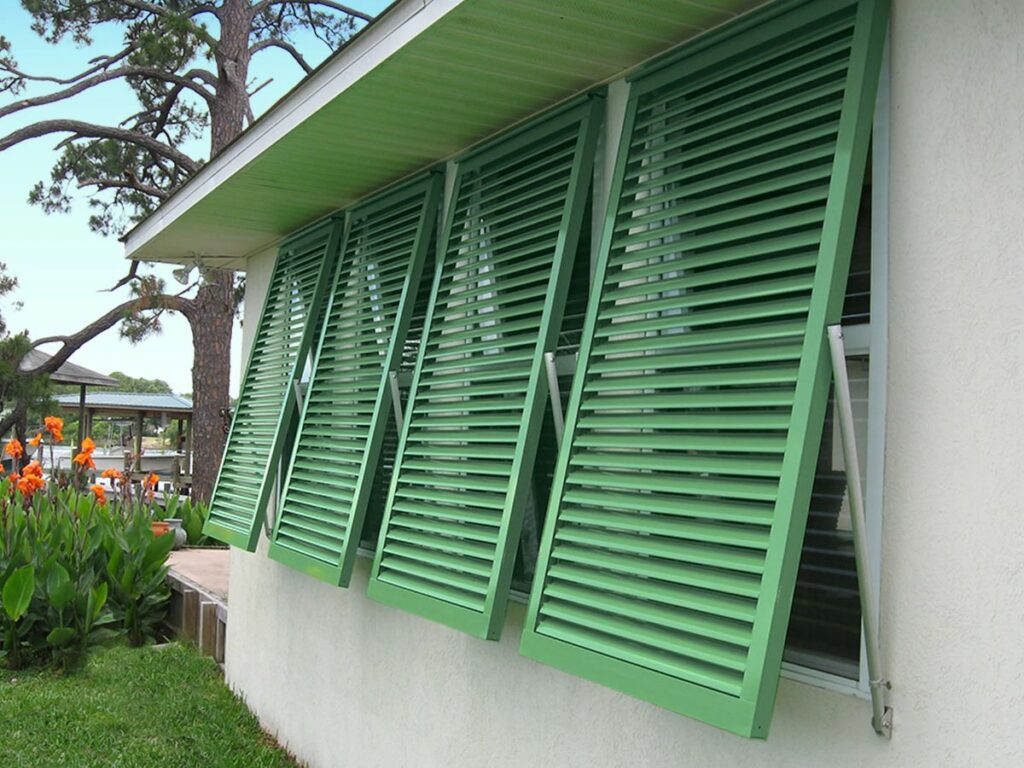
2. What are Impact Windows?
Impact windows are designed to resist shattering when struck by debris, even if the glass cracks. They use laminated glass layers bonded with a strong interlayer, so the pieces stay in place. This keeps the opening sealed and reduces the risk of damage inside your building.
From my experience working with contractors and engineers, impact windows are often chosen for projects that need year-round protection, not just during hurricane season. If your property faces high winds or frequent storms, you’ll want to know how these differ from hurricane windows before placing your order.
3. Glass Composition
Not all storm-resistant glass is the same. I’ve worked with engineering teams who needed this detail before finalizing their specs, and it’s worth knowing before you buy.
Hurricane Windows: Made of Laminated Glass
- Thicker Construction: Uses two layers of glass with a durable interlayer, giving them added strength against high winds. I’ve seen this extra thickness make a big difference during post-storm inspections.
- Stronger Outer Pane: Often built with a thicker exterior glass sheet to take the first hit in severe weather.
- Heavy-Duty Frame Support: Paired with reinforced frames that keep the glass locked in place under pressure.
- Hurricane Certification: Meets strict regional codes for coastal and high-risk areas. These certifications mean they’ve passed pressure and impact testing specific to hurricane-prone zones.
Impact Windows: Made of SGP (SentryGlas Plus)
- Multiple Glass Layers: Made with several bonded glass sheets and a strong plastic interlayer to hold everything together. This structure stops the glass from breaking apart entirely on impact.
- Shatter Protection: Even if the glass cracks, the interlayer keeps it intact and prevents dangerous shards.
- Slimmer Profile: Typically thinner than hurricane glass, which can be an advantage for retrofit projects. The reduced thickness also makes it easier to install in existing frames.
- Impact Testing: Rated to resist both small and large projectile hits during storms. This rating confirms glass can handle real-world hazards like flying branches or roofing materials.
Bottom Line
If your priority is withstanding extreme wind pressure in severe storm zones, stronger-rated windows are the better fit. Impact windows focus on keeping glass intact after impact, offering dependable safety throughout the year in a range of conditions.

4. Air Flow Performance
From my experience working with coastal projects, how well windows handle air movement can impact both comfort and energy costs. You need to know how hurricane windows and impact windows perform under wind pressure, so you can choose the right fit for your building.
Hurricane Windows: Built for High Wind Resistance
- Tighter Seals: Uses reinforced weatherstripping to block strong wind from entering the building. I’ve inspected projects after storms where these seals kept interiors free from drafts.
- Pressure-Rated Frames: Designed to withstand high air pressure without bending or letting in air. This is especially important in taller buildings where wind loads can be severe.
- Less Draft Risk: Stronger seals reduce temperature swings inside during heavy storms. This means fewer hot or cold spots that can impact guest comfort in hotels or villas.
- Energy Efficiency Boost: Reduced air leakage helps lower HVAC strain during peak seasons. Over time, this can cut operational costs for large properties.
Impact Windows: Balanced Airflow and Safety
- Effective Sealing: Uses a secure interlock system to keep unwanted air movement to a minimum. This design works well in buildings where consistent indoor comfort is a priority.
- Moderate Pressure Handling: Performs well in steady winds, though may not match the extreme pressure ratings of hurricane windows.
- Comfort-Oriented Design: Helps maintain stable indoor temperatures without pushing HVAC systems too hard. I’ve seen this make a real difference in buildings with high energy demands.
- Noise and Draft Control: Reduces both wind noise and minor air leaks during storms. This makes it easier to maintain a quiet, comfortable environment for guests or residents.
Bottom Line
Hurricane windows are better for extreme wind conditions and maintaining a sealed building envelope. Impact windows provide reliable protection with good air control, making them a practical choice in less intense wind zones.
5. Environmental Ratings
I’ve had projects stall because the windows didn’t meet environmental performance requirements, even though they looked perfect on paper. You need to know how hurricane and impact windows are rated so you can avoid costly reorders and keep your build on track.
Hurricane Windows: Tested for Extreme Conditions
- High Wind Load Ratings: Certified to handle stronger wind speeds found in hurricane-prone zones. This makes them a safer choice for properties near coastlines.
- Water Infiltration Resistance: Built to stop rain from entering during heavy storms. This protects interiors and reduces long-term repair costs.
- Pressure Cycling Tests: Goes through repeated wind and pressure testing to prove long-term durability. I’ve reviewed reports where these passed far beyond minimum requirements.
- Regional Code Compliance: Meets strict building codes set by high-risk areas like Florida’s HVHZ (High-Velocity Hurricane Zone). This ensures you meet inspection standards without delays.
Impact Windows: Balanced Environmental Protection
- Strong Wind Resistance: Handles moderate to high winds without failing. This makes them suitable for inland properties that still see seasonal storms.
- Water Resistance Design: Uses sealed frames and gaskets to block rain intrusion. This design reduces maintenance needs over time.
- Impact and Pressure Balance: Tested to manage both debris impact and consistent wind pressure. I’ve seen these perform well in mixed weather conditions year-round.
- Code Approved for Many Areas: Meets local codes in most regions but may not always match hurricane window standards for extreme zones. Always check your project’s location requirements.
Bottom Line
If your building needs to meet the toughest environmental ratings for severe storm regions, stronger-rated windows are the safer choice. Impact windows still perform well but are often a better fit for projects in areas with less demanding code requirements.

6. UV Protection
I know how quickly UV damage can affect interiors when the glass isn’t designed to block it. I’ve also seen how the right UV protection can keep materials looking new for years. Understanding how hurricane windows and impact windows perform in this area will help you make the right call for your project.
Hurricane Windows: Strong UV Blocking Capability
- High UV Filtering Glass: Built with coatings that block most harmful UV rays. Vallisco hurricane windows use advanced glazing technology to provide long-lasting UV protection, making them ideal for properties exposed to intense sunlight year-round.
- Laminated Glass Layers: The interlayer absorbs UV radiation before it can pass through. I’ve reviewed tests showing this feature keeps indoor colors looking new for years.
- Energy-Saving Benefits: Reduced UV penetration helps lower cooling loads in sunny climates. This can make a difference in operational costs for large properties.
- Coastal Climate Advantage: Ideal for buildings exposed to intense sun and salt air, where material wear can happen faster.
Impact Windows: Consistent UV Protection
- Protective Coatings: Uses specialized glazing to block a large percentage of UV rays. This keeps interiors safer from sun-related damage.
- Laminated Structure: The bonded layers act as a UV shield while still allowing natural light inside. For many projects, this balance is a selling point.
- Energy Efficiency Support: Reducing UV also helps keep interior spaces cooler. I’ve had property managers note the difference in guest comfort during peak summer.
- Versatile Use: Works well in both coastal and inland properties where sun exposure is high.
Bottom Line
Hurricane windows often provide the strongest UV defense, making them better for high-sun and high-heat locations. Impact windows still offer reliable UV protection and suit projects where sunlight is less extreme. Choosing the right option can help extend the life of your interiors and reduce replacement costs.
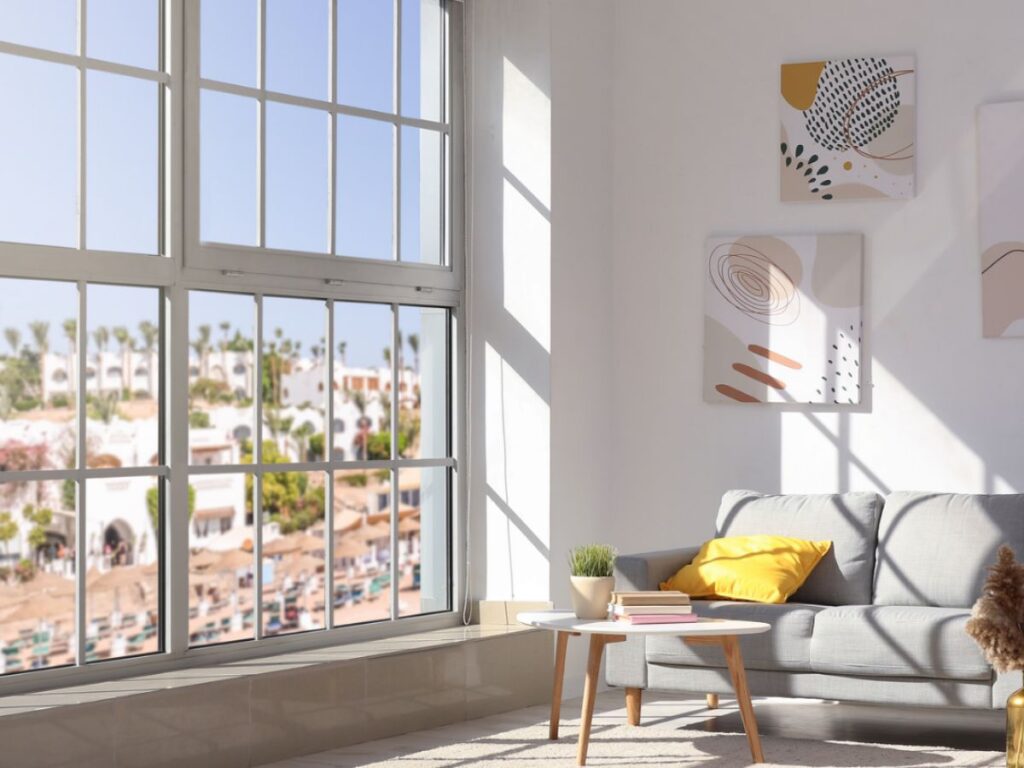
7. Noise Reduction
Quiet interiors are a big deal for many commercial properties, especially in busy or high-wind areas. I’ve worked on projects where the right window choice made the difference between constant complaints and happy guests.
Hurricane Windows: Strong Barrier Against Wind Noise
- Thicker Glass Layers: Uses heavy laminated glass that naturally blocks more sound. This makes them a good fit for properties near busy roads or storm-prone coastlines.
- Reinforced Frames: Built to stay tightly sealed under pressure, reducing gaps where noise can get through. I’ve noticed this benefit most during strong winds when drafts are common in other window types.
- Multiple Seals: Designed with several layers of weatherstripping to cut down on sound transmission. This also helps maintain temperature control inside.
- Tested for Airborne Noise: Meets higher Sound Transmission Class (STC) ratings than standard glass. That means better protection against everyday noise pollution.
Impact Windows: Everyday Noise Control with Safety
- Laminated Glass Core: The plastic interlayer absorbs sound vibrations, making interiors quieter. This is especially useful in urban or high-traffic locations.
- Tight Seal Construction: Uses precision-fit frames to reduce the sound that can pass through small openings. I’ve worked with properties where this alone made a noticeable difference.
- Balanced Thickness: Offers good sound reduction without being overly heavy for standard frames. This makes it easier to install in retrofits.
- STC Rating Compliance: Meets sound control standards that help with both comfort and privacy inside your property.
Bottom Line
If your project is in a location with constant noise or strong winds, thicker glass and stronger seals will make a difference. Impact windows can still provide dependable sound control, especially in areas with moderate noise levels where safety remains a top concern.
8. Maintenance Needs
From what I’ve learned over multiple projects, the upkeep for hurricane windows and impact windows can affect your long-term costs. You want a clear picture of what’s required so you can plan ahead and avoid surprises.
Hurricane Windows: Built for Long-Term Durability
- Reinforced Frames: Made with materials that resist corrosion and wear over time. This is especially valuable for coastal properties exposed to salt air.
- Laminated Glass Care: Glass needs minimal cleaning beyond regular washing. I’ve had clients keep them in great shape for years without special treatments.
- Seal Inspection: Weatherstripping should be checked periodically to keep wind and water out. Replacing seals early can prevent bigger repairs later.
- Hinge and Lock Maintenance: If windows open, hinges and locks need occasional lubrication. This keeps them working smoothly during inspections and emergencies.
Impact Windows: Lower Ongoing Attention
- Durable Glass Layers: The laminated structure stays strong with standard cleaning. It doesn’t require specialty coatings or frequent servicing.
- Simpler Frame Upkeep: Frames are designed for general conditions, so cleaning and occasional checks are enough. I’ve seen these stay in good working order with minimal effort.
- Seal and Gasket Checks: Even with strong construction, seals can wear down over time. A quick visual check during routine maintenance helps catch issues early.
- Hardware Longevity: Handles and locks typically have long lifespans. A little lubrication every year or so is usually all they need.
Bottom Line
Hurricane windows may need more frequent inspections for seals and hardware, especially in harsher climates. Impact windows tend to have lower maintenance demands but still benefit from regular checks to keep them performing well over the years.
9. Cost Comparison
I’ve been on projects where the choice between hurricane windows and impact windows came down to more than just performance, it was about balancing cost with compliance. You need a clear breakdown so you can align your budget with your project’s goals.
Hurricane Windows: Higher Upfront Investment
- Stronger Construction: Built with thicker glass and reinforced frames, which naturally raises material costs. This is part of why they excel in high-risk storm zones.
- Certification Expenses: Meeting strict hurricane codes adds to the price. I’ve worked on projects where this was a necessary trade-off to pass inspection.
- Installation Complexity: Heavier materials and specialized frames require more labor. This can increase installation time and costs.
- Long-Term Value: The higher initial price may pay off by reducing damage repair costs after severe storms.
Impact Windows: More Affordable Entry Point
- Lower Material Costs: Uses slightly thinner glass and less reinforcement, which reduces the price. Still, they provide solid protection for many areas.
- Simpler Code Compliance: Often meets regional requirements without expensive certification processes. This can help speed up procurement.
- Easier Installation: Lighter weight and simpler frames can cut down on labor costs. I’ve seen this benefit tight project timelines.
- Balanced Performance: While cheaper upfront, they still offer strong year-round protection for moderate storm regions.
Bottom Line
If your project is in a high-risk coastal zone, the added investment in hurricane windows can prevent costly storm damage down the road. For inland or moderate-risk areas, impact windows offer a more cost-effective choice without compromising essential safety standards.
10. 3 Factors To Consider When Choosing Between Hurricane and Impact Windows
Choosing between hurricane windows and impact windows isn’t just about price or looks. It’s about picking what works best for your building, location, and long-term goals.
Here are some things to think through before you decide.
Project Location
Where your building is located plays a big role in deciding between hurricane and impact windows. Properties right on the coast face higher wind pressures, salt exposure, and more debris risks, which often makes hurricane windows worth the investment.
If your site is inland but still experiences seasonal storms, impact windows may be a more cost-effective option without sacrificing safety. Vallisco offers both hurricane windows and impact windows that meet regional code requirements and deliver dependable performance.
Building Type and Use
The type of building you’re working on can change which window makes the most sense. Hotels, villas, and multi-unit properties with high occupancy may need hurricane windows for added safety and compliance.
For smaller projects like B&Bs or greenhouses, impact windows can be a practical choice, especially when the budget is tight. I’ve seen commercial properties opt for hurricane windows in common areas and impact windows in less exposed parts of the building. Think about how the building will be used and where protection is most critical.
Wind and Debris Risk
The level of wind and debris your property might face should be a deciding factor. Coastal areas or open landscapes with no wind barriers can send larger debris flying during storms, and hurricane windows are built to handle those impacts along with high pressure.
Impact windows are designed to keep glass intact after a hit, but may not have the same pressure resistance as hurricane models.
Conclusion
In the villa project I shared earlier, one choice caused weeks of delay.
This guide shows you how to avoid that problem. You now understand the differences between hurricane and impact windows, including where each performs best and their cost considerations.
Work with a supplier who understands your needs and delivers the right product. Vallisco has both options ready for you.
Contact us today to get started!
More Guides and Tips to Explore
For more helpful content, explore our collection of recommended reads:
Still haven’t found what you’re looking for? Don’t hesitate to contact us. We’re available around the clock to assist you.


